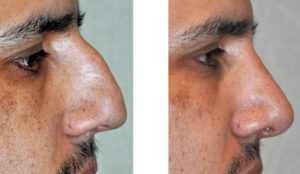I came across an interesting blog from Rodeo Drive Plastic Surgery in Beverly Hills California on Google’s blogspot on rhinoplasty. They had entitled their version of a rhinoplasty as ‘Breathe Easy’. This obviously relates to the concern of some patients (although most patients are not aware of this possibility) that breathing through their nose after a cosmetic rhinoplasty may be worse after such a procedure. It is possible that even if you had not problems breathing through your nose prior to a rhinoplasty, you may have some difficulty breathing through it after.

Fortunately, most of the time, nose breathing is not affected after rhinoplasty. Certain types of patients are very prone to developing this problem, such as a long and narrow nose or when a very broad nose is narrowed. When these types of patients are identified, some changes can be done during the procedure to try and prevent breathing problems after surgery. Cartilages grafts can be done to open up the internal nasal valve angle as a preventative manuever. This is exactly the type of surgical manuever that is done when the purpose of the operation os to treat a breathing problem in which one of the culprits is collapse of the internal nasal valve angle.
While all potential breathing problems can not be 100% prevented or every patient at risk for breathing problems identified prior to surgery, patients can ‘breathe easier’ knowing that such risks have been reduced wh today’s modern rhinoplasty techniques.
Dr Barry Eppley
Indianapolis, Indiana


